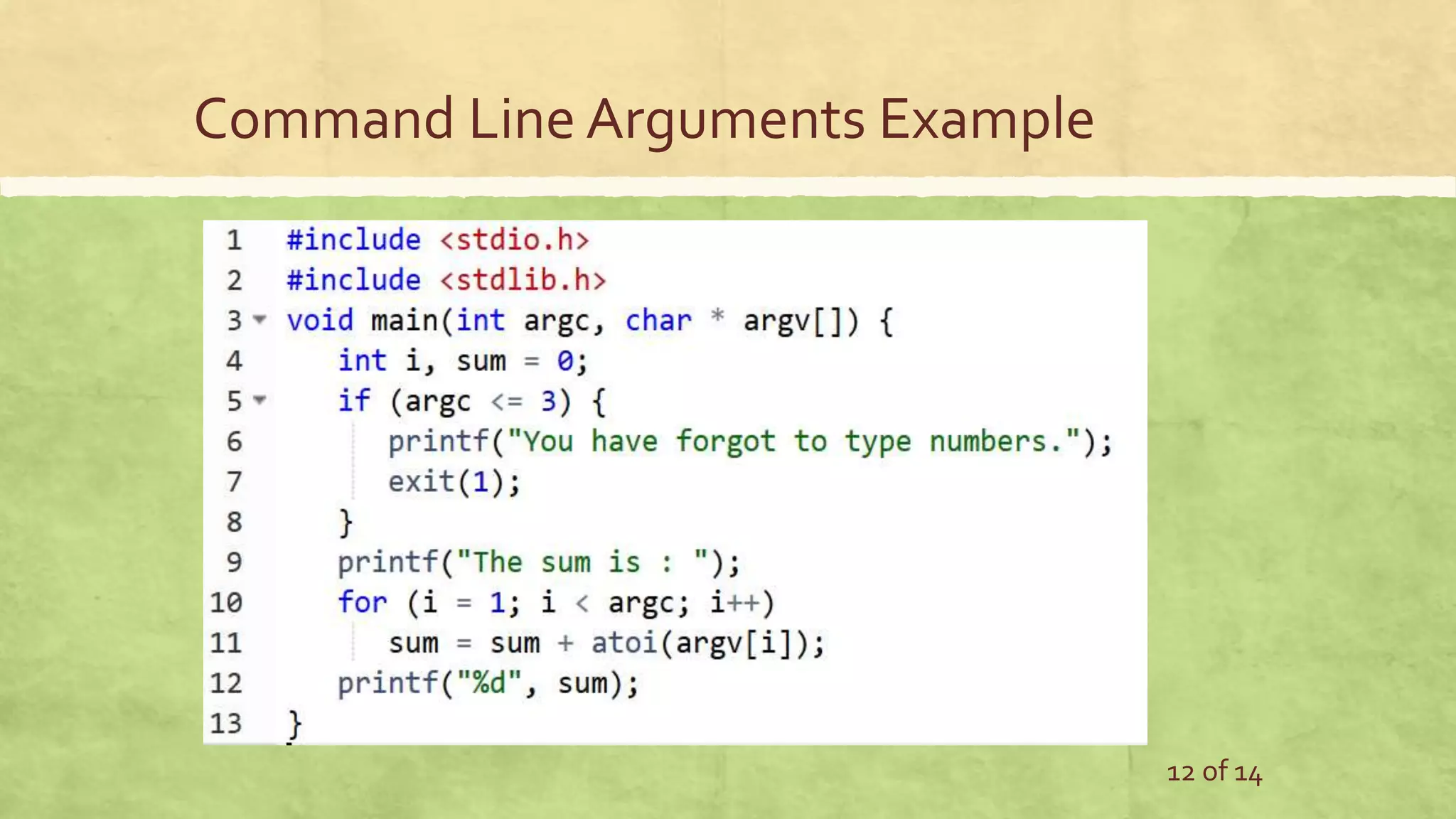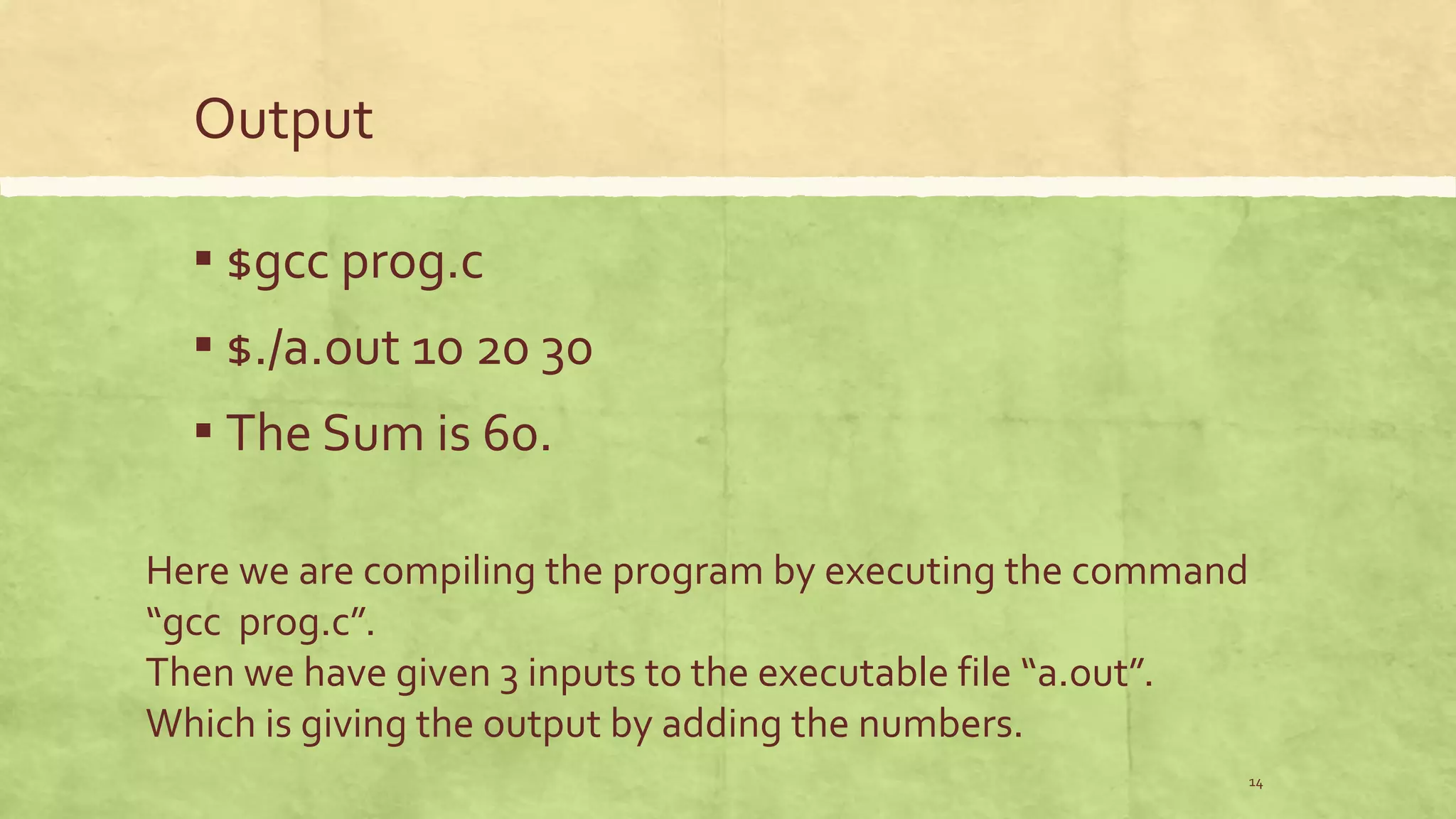This document discusses file handling and command line arguments in C programming. It covers opening, reading and writing files, as well as the basics of passing arguments to a program from the command line using argc and argv. It includes examples of creating and writing to a file, as well as a program that adds command line arguments and outputs the sum.
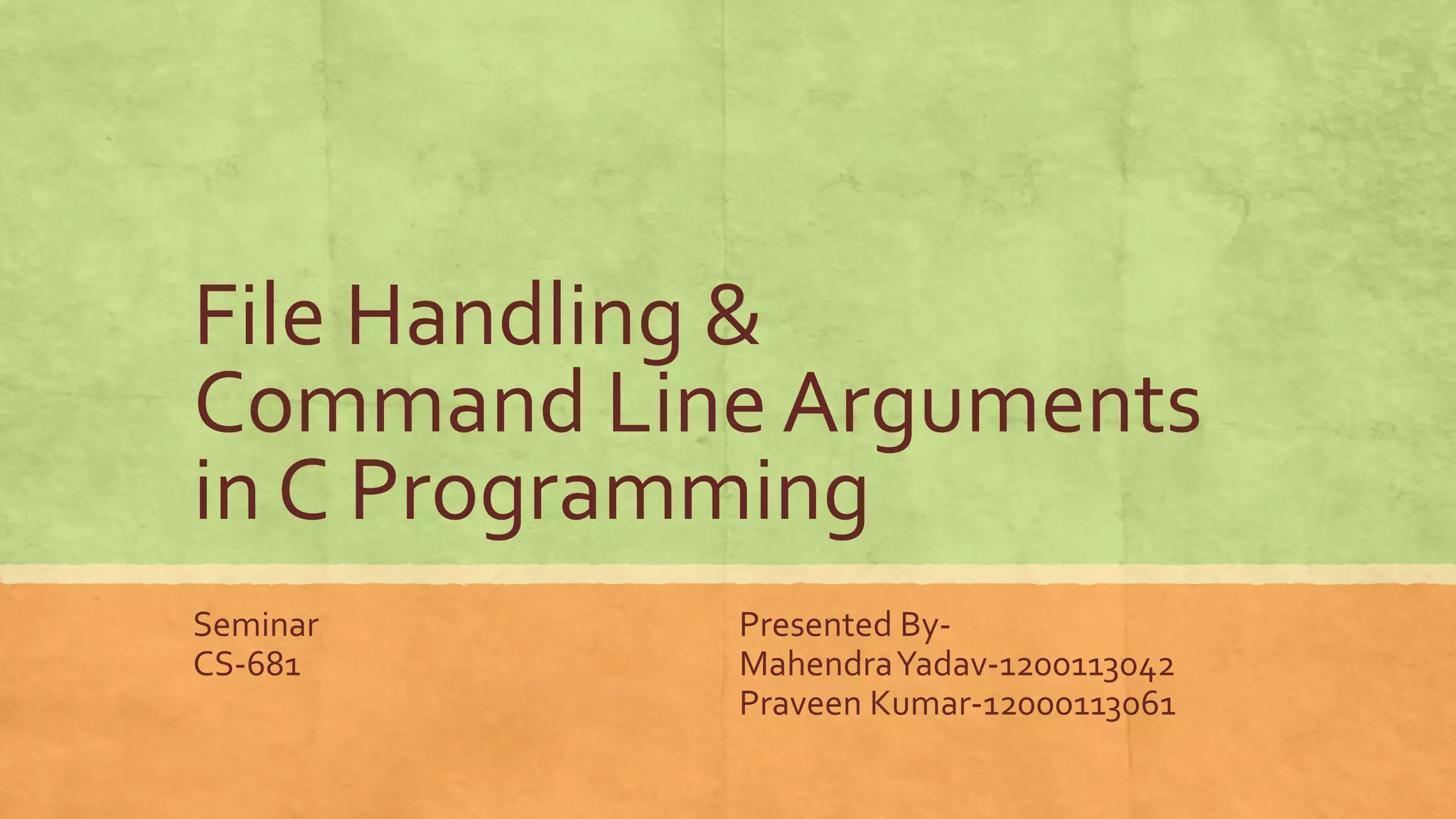
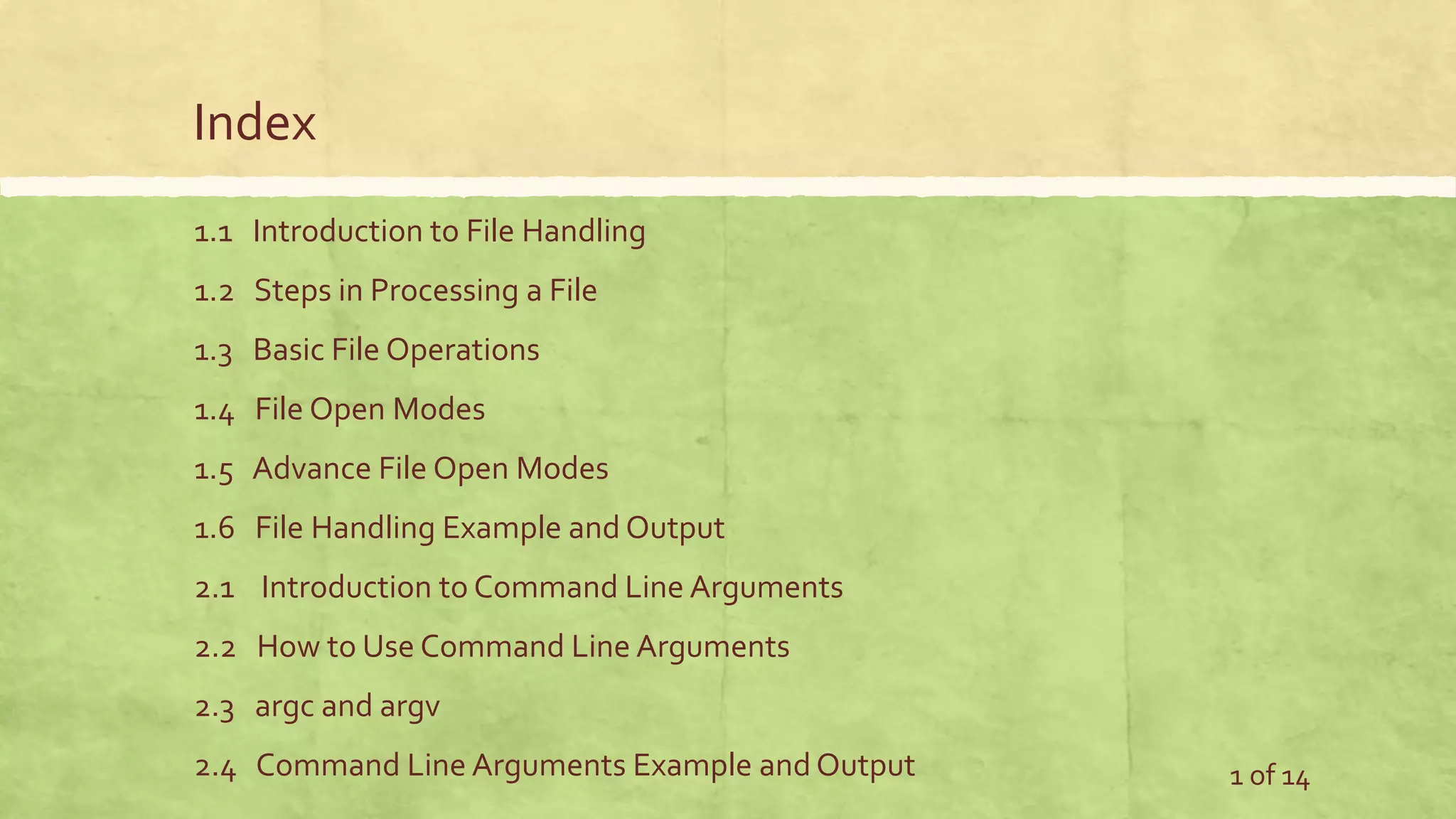
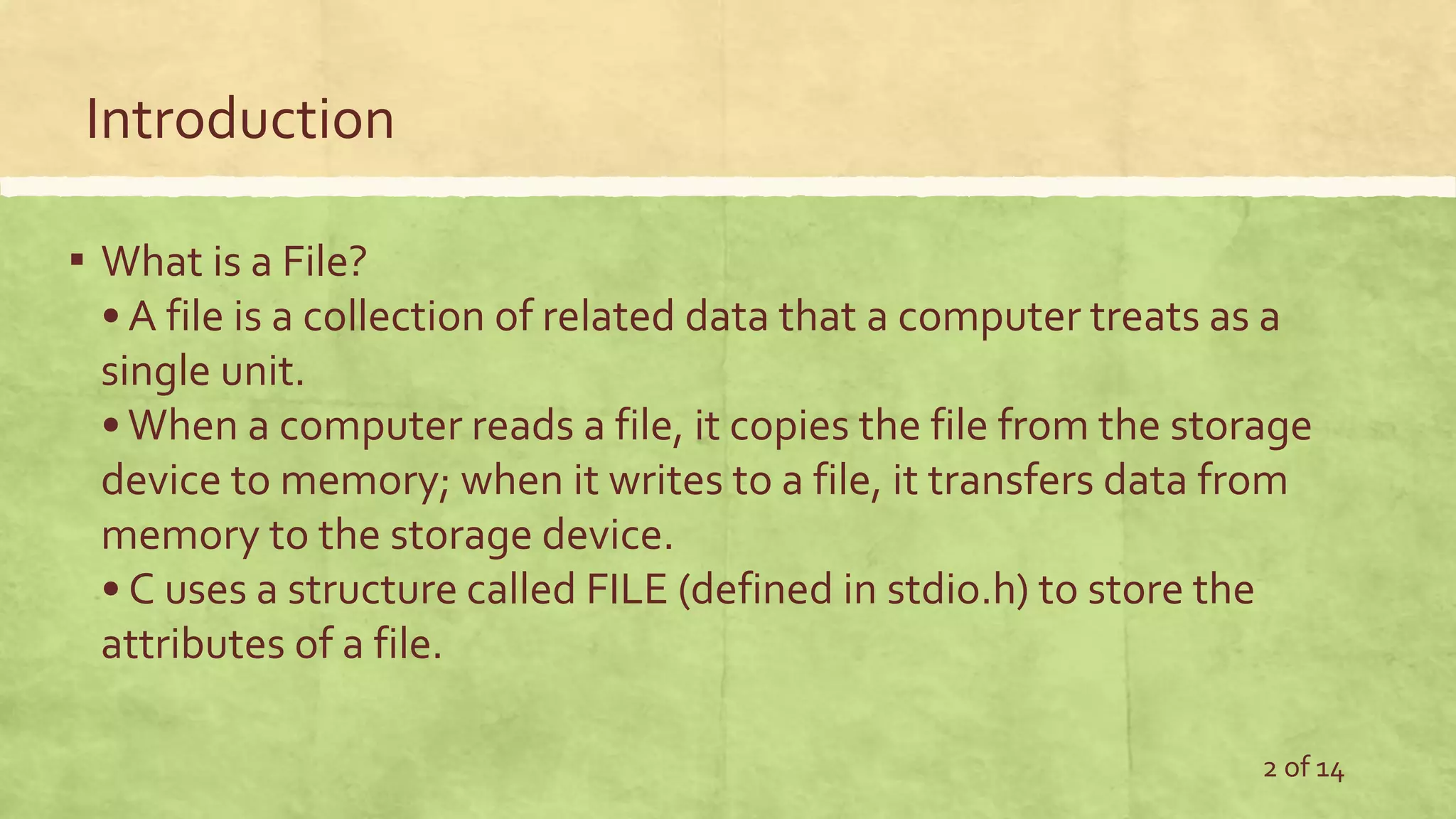
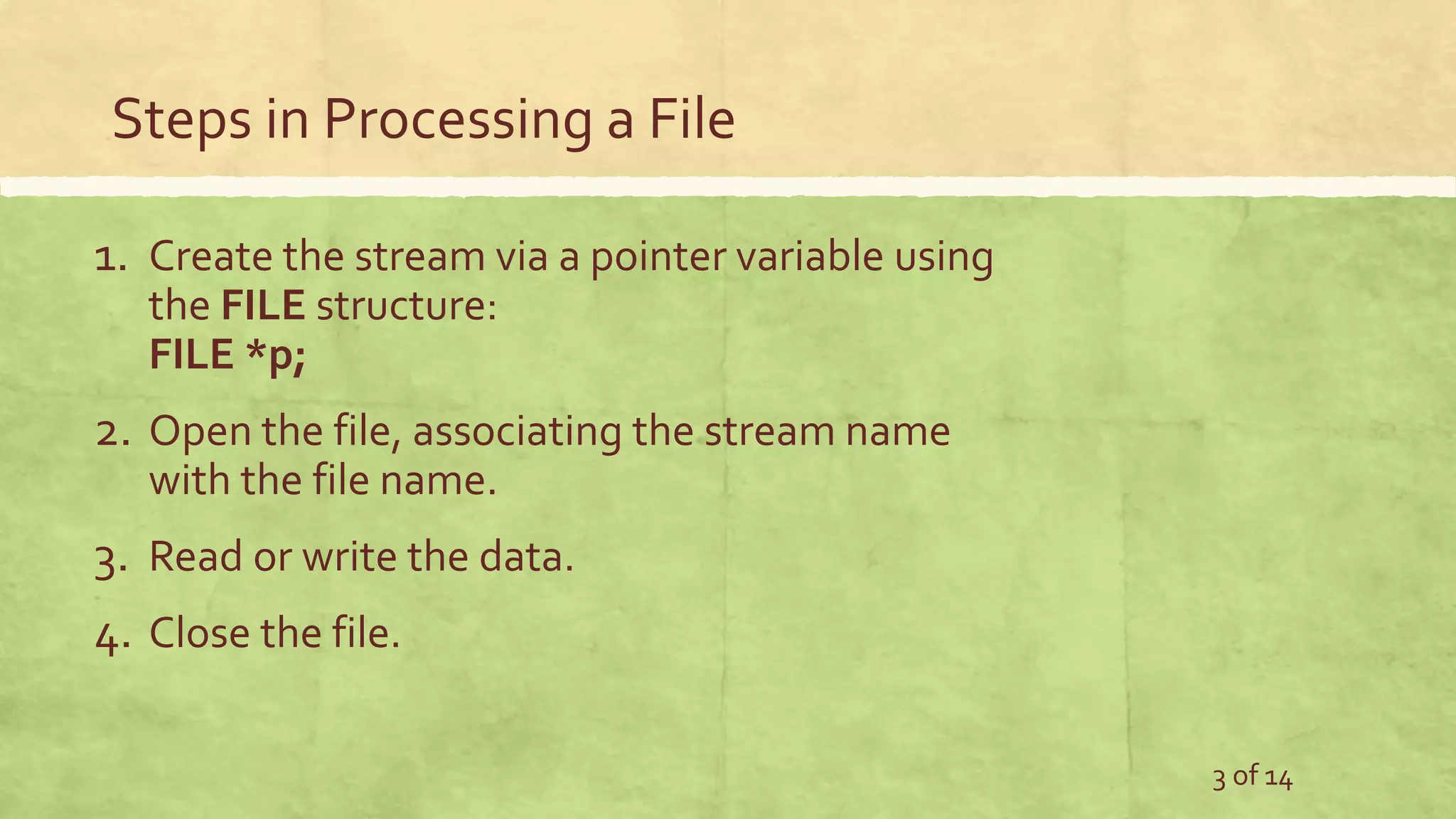
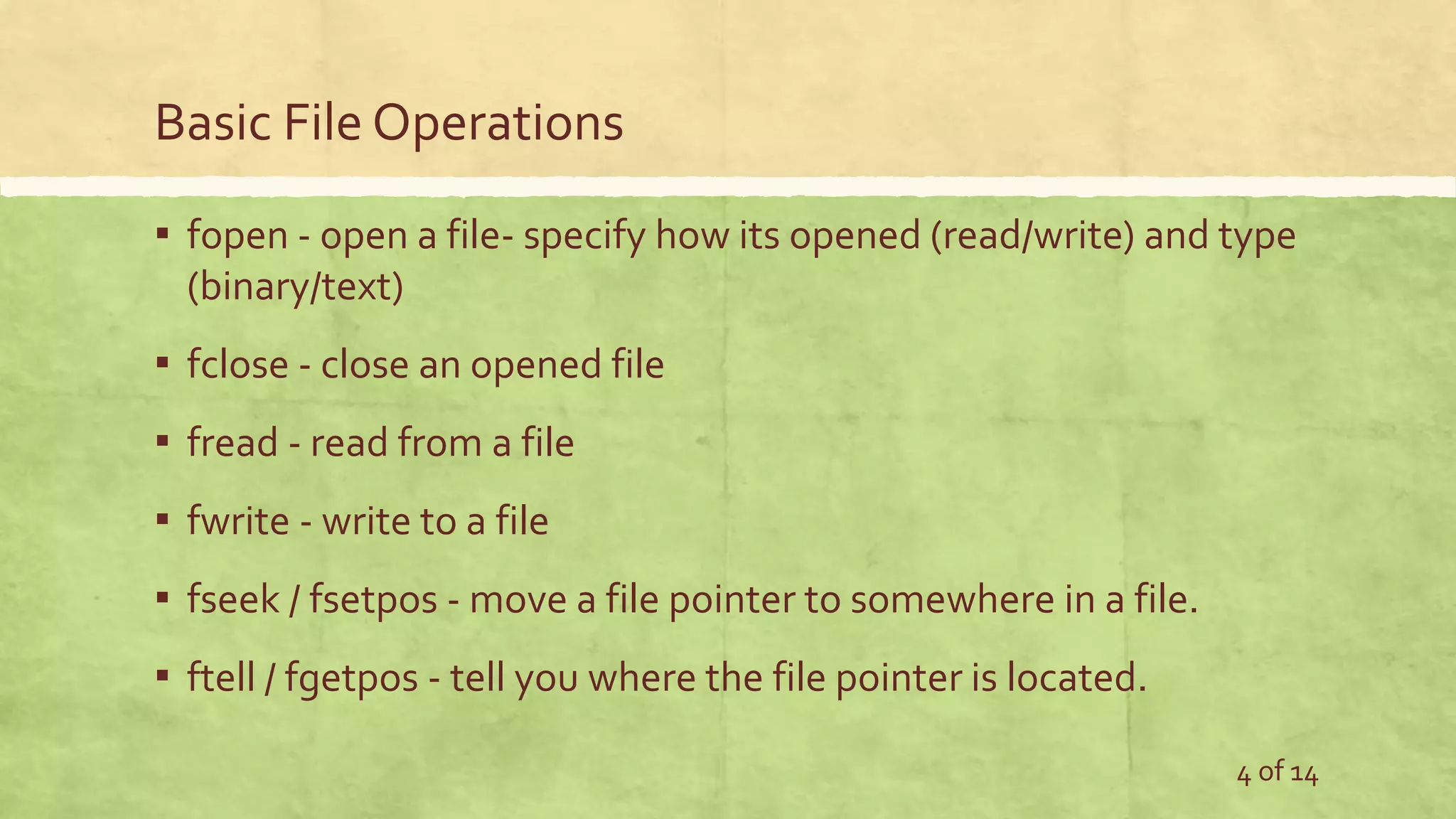
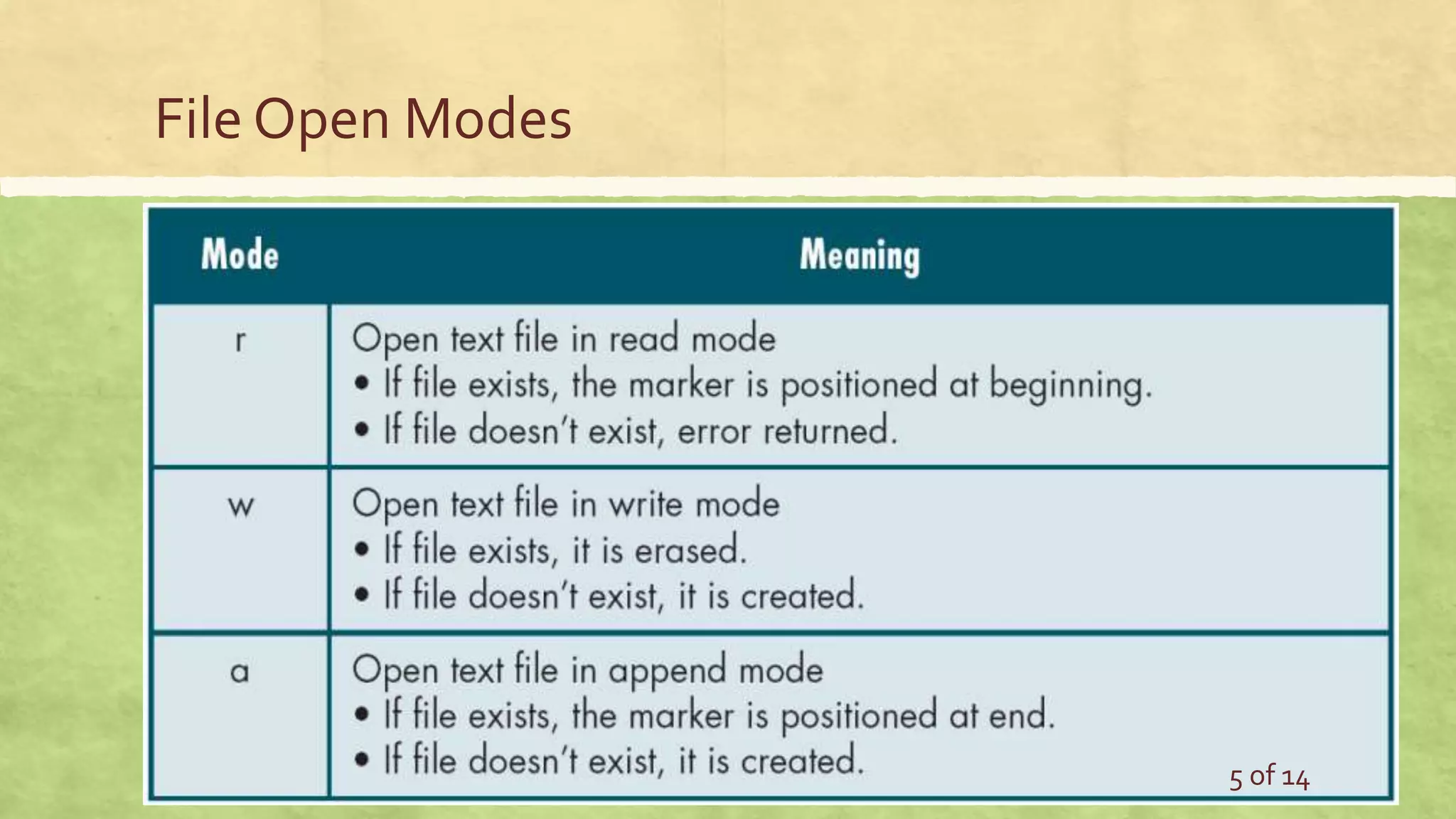
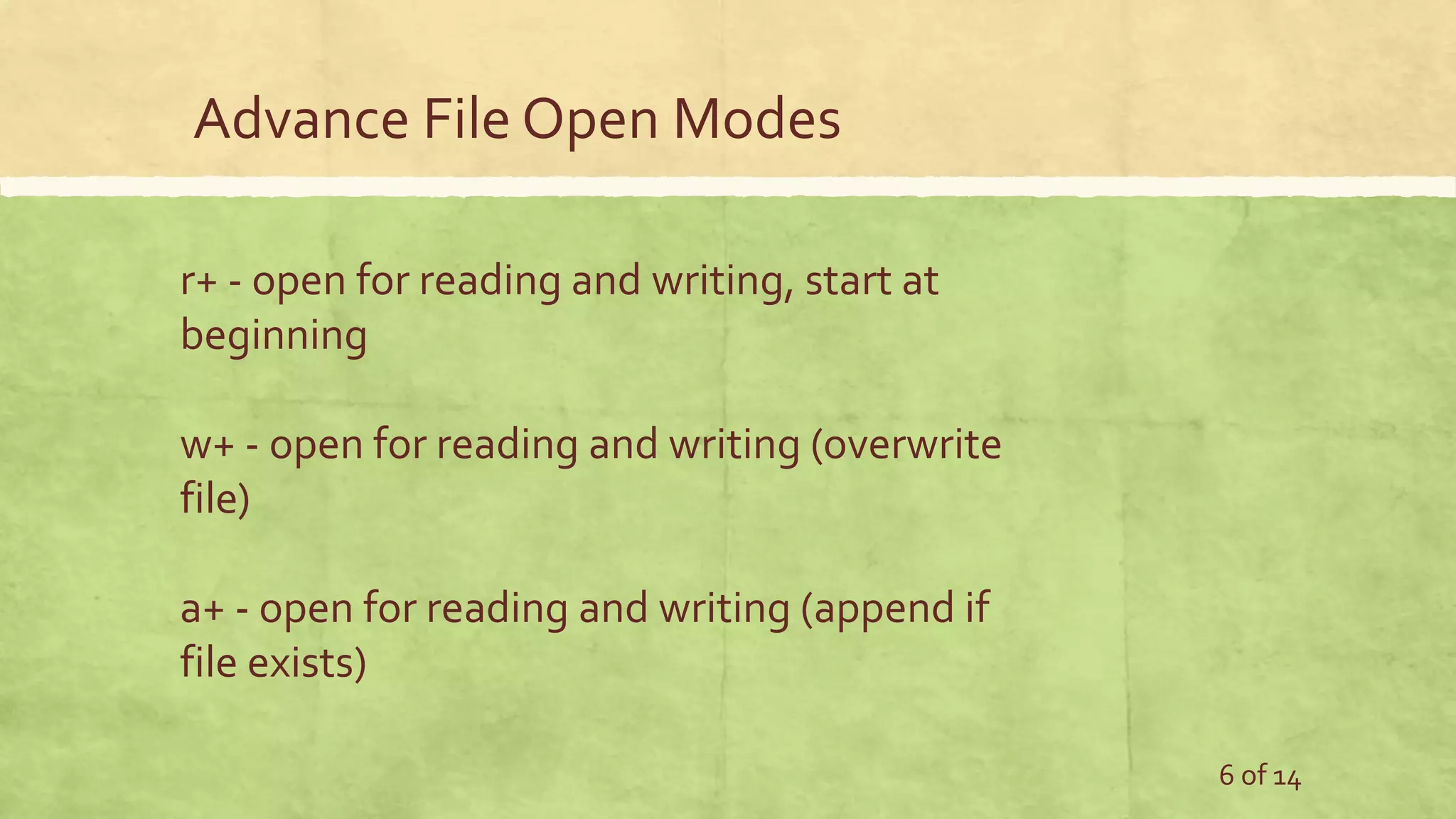
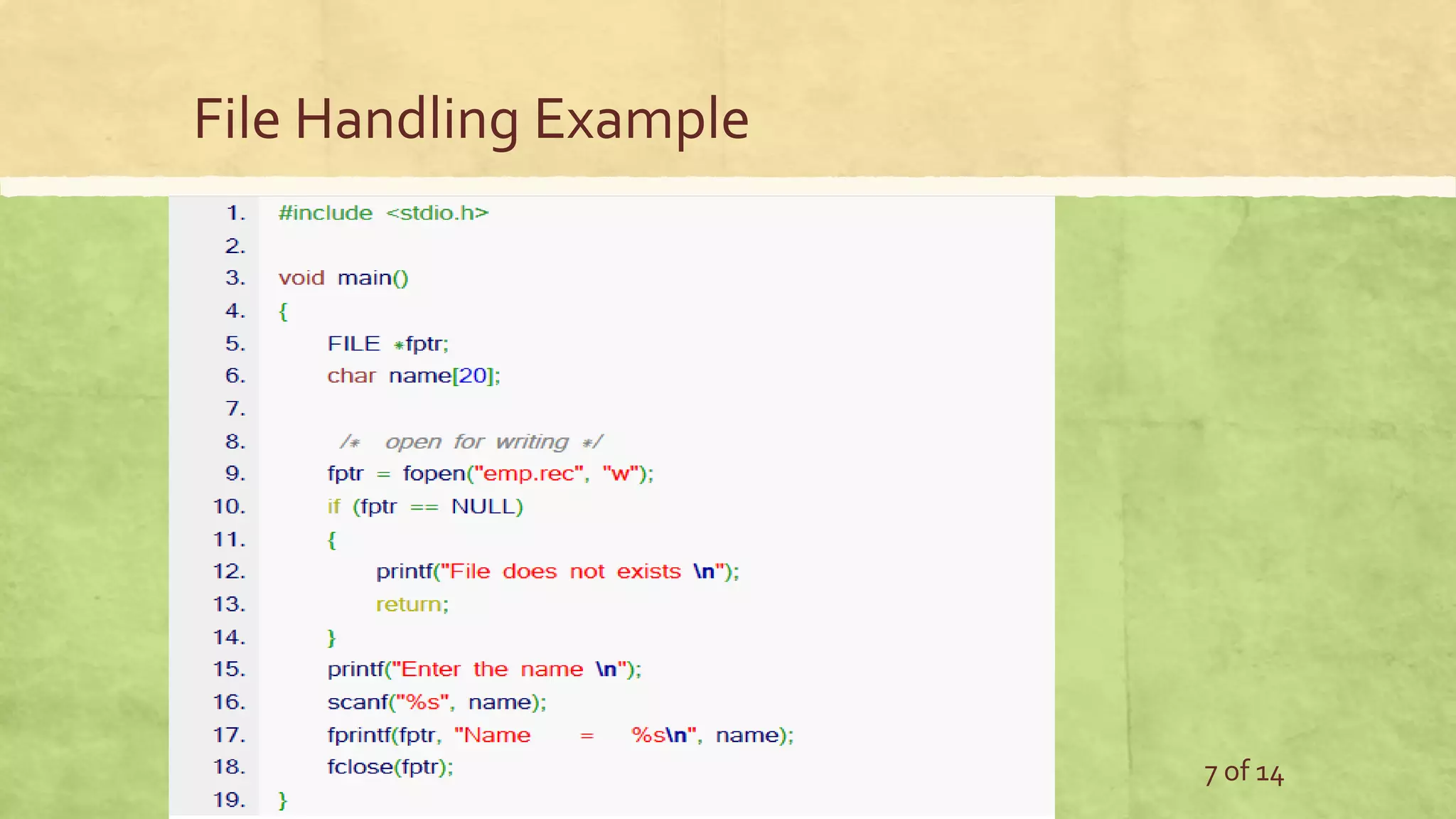
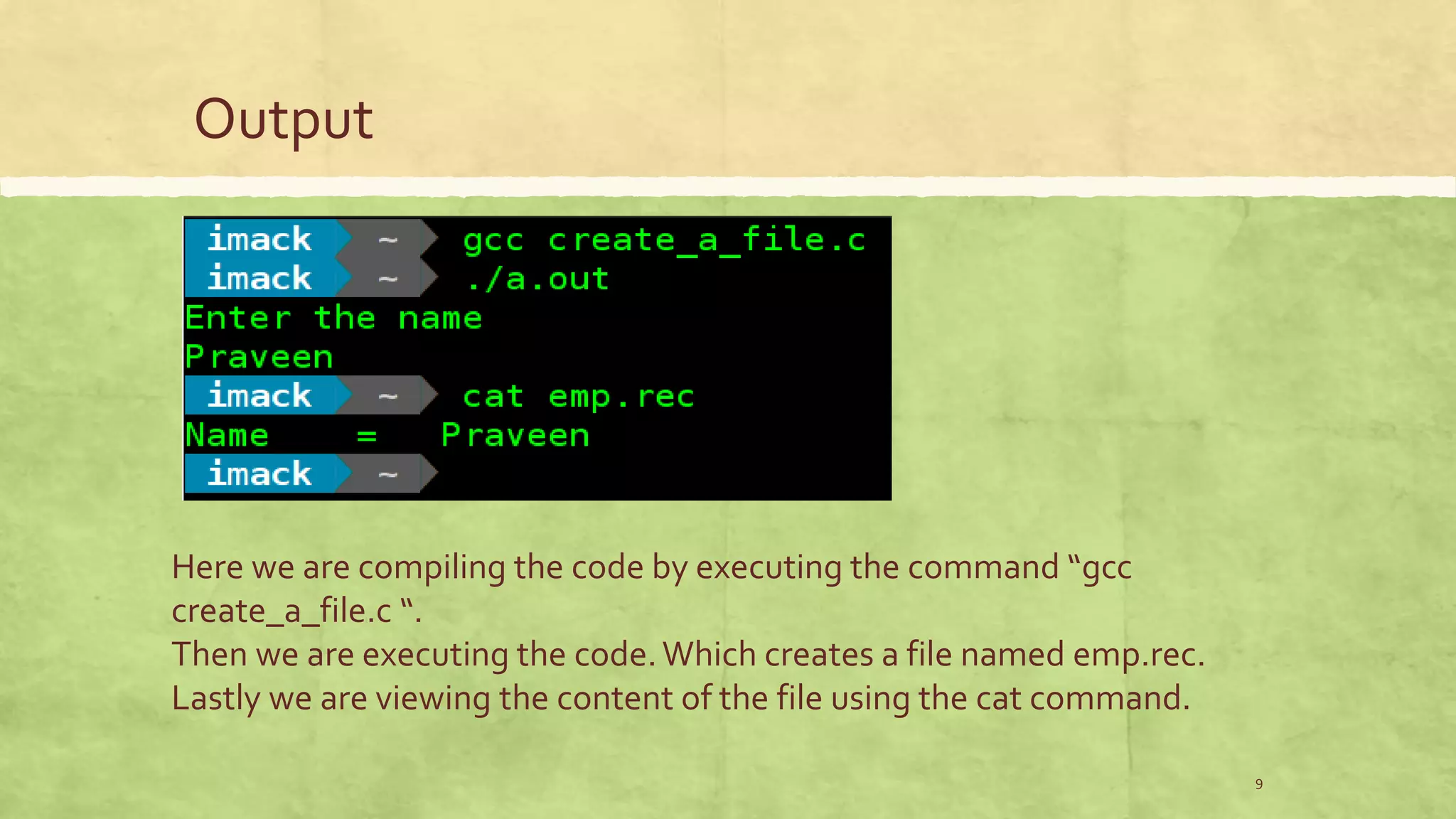
![Introduction to Command Line Arguments ▪ So far, we have been defining the main() function to receive no arguments. ▪ But the main( ) function can receive two arguments. ▪ This is how arguments can be passed in at the command line. int main(int argc, char *argv[ ]) { … } 9 of 14](https://image.slidesharecdn.com/filehandlingincff-160606170007/75/File-Handling-and-Command-Line-Arguments-in-C-10-2048.jpg)
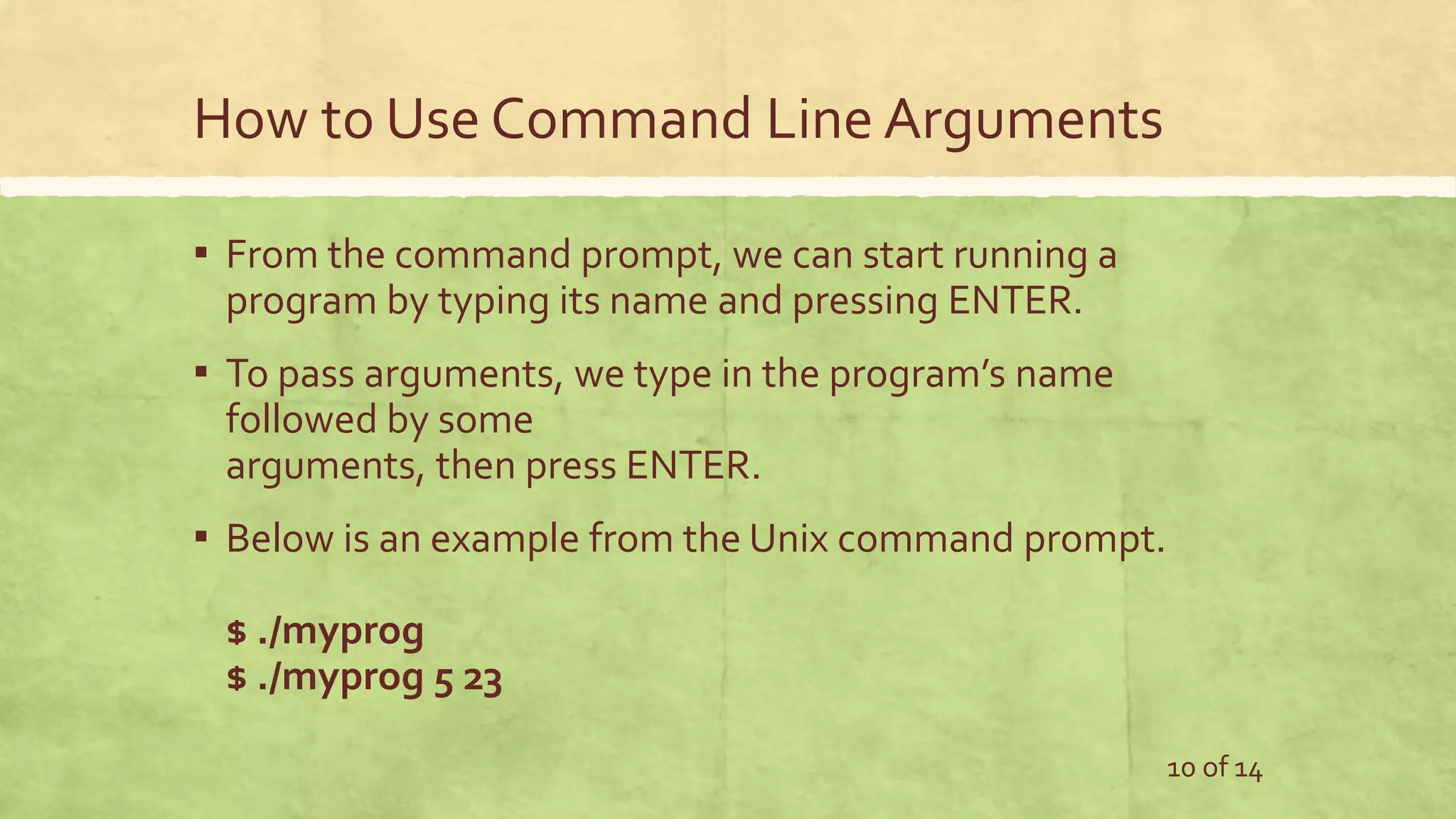
![argc and argv ▪ The name of the variable argc stands for "argument count"; argc contains the number of arguments passed to the program. ▪ When the user types in arguments, the user separates each argument with a space. ▪ The name of the variable argv stands for "argument vector“. argv is an array of character strings. ▪ argv[1] is the character string containing the first argument, argv[2] the second, etc. 11 of 14](https://image.slidesharecdn.com/filehandlingincff-160606170007/75/File-Handling-and-Command-Line-Arguments-in-C-12-2048.jpg)
